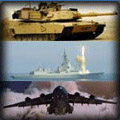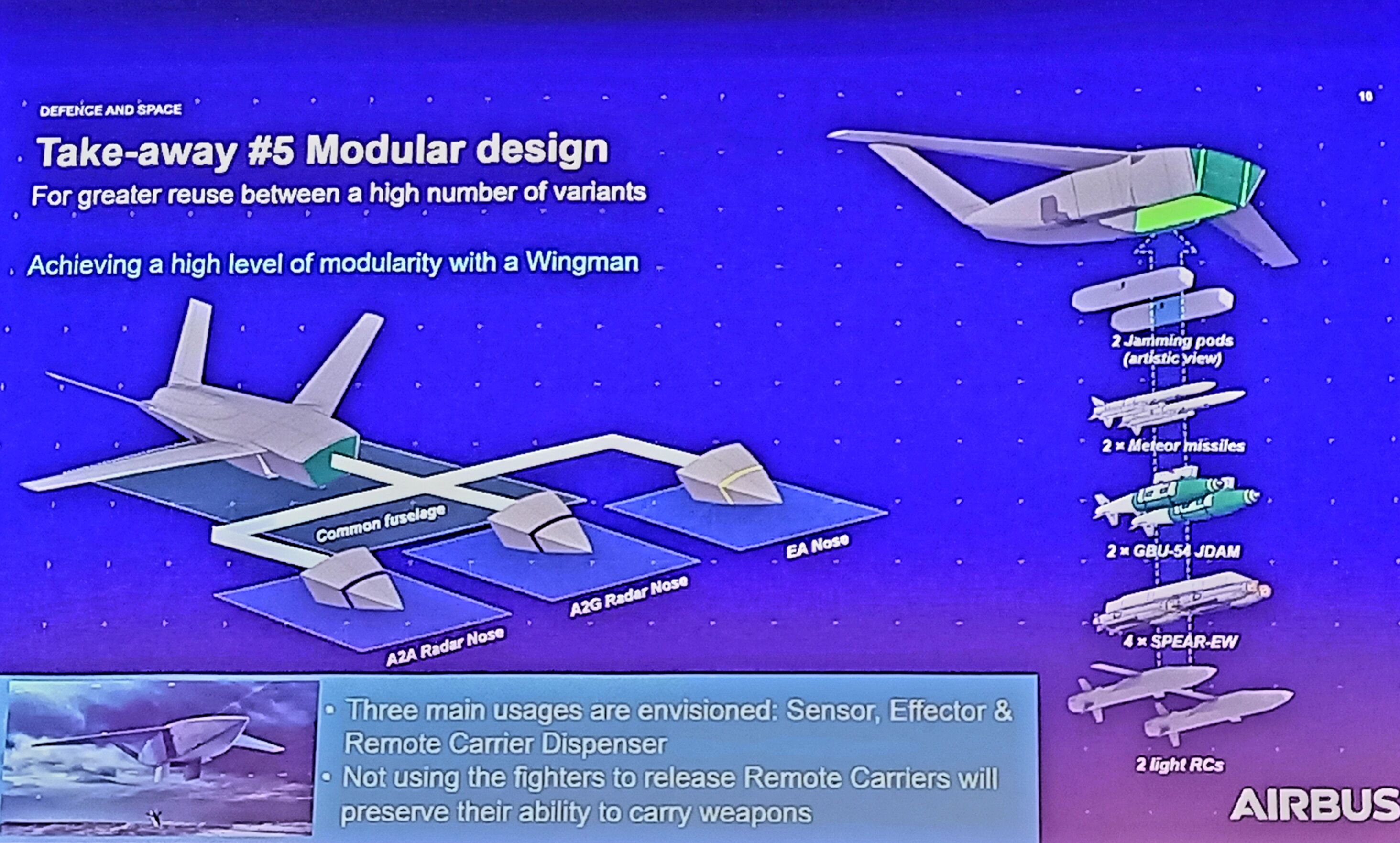Drone swarms, solar-powered UAVs and congested air space management: the US Army’s experiment in the desert
14 November 2022
Set against a piercing blue sky, 40 small drones hovered near-silently in close formation above sand and scrub brush. They drifted toward a dirt road that bisected a seemingly endless expanse of desert. As the drones approached the sandy tract, about half descended and touched down gently, still in formation, astride the road, which enemies could have used to outflank nearby US Army troops. The drones were in position – ready, had they been carrying explosives, to defend against anything headed their way. At least that is the idea.
But the dozens of quadcopters used in the 9 November “swarm” manoeuvre carried no weapons. They were conducting technology demonstrations as part of Project Convergence (PC), a US Army-hosted event giving military planners a chance to test and understand new military technologies. In recent weeks, soldiers, helicopters and fleets of small drones participated in the demonstrations, held in the high desert of inland California. Participants included all branches of the US military and the armies of the UK and Australia.
The US Army’s civilian administrator, secretary Christine Wormuth, says the effort is not simply about finding and testing the latest gadgets. “These cannot just be a cool set of experiments,” says Wormuth, who attended Project Convergence demonstrations on 9 November. Rather, the efforts should help bring innovative technologies to operational use.
This year’s event, known as PC22, included demonstrations within two simulated large-scale conflicts: a European campaign and war in an Indo-Pacific maritime environment.
Some experiments were designed around specific military tasks, such as suppressing enemy air defences and – its antithesis – so-called anti-access/area denial. Specific technologies like the swarming drones were also handed over to operational military units, letting junior commanders explore how to incorporate such assets into their exercises. Numerous aviation platforms were included in PC22. Some stretched the bounds of existing military doctrine and tactics, while others identified new challenges for which solutions are required.
DRONE SWARM
Drones – including sophisticated unmanned air vehicles (UAVs) designed for military purposes, and commercially available quadcopters adapted for combat use – have become ubiquitous in modern warfare.
While previous iterations were controlled by remote operators, the drone-swarm concept uses automation to reduce the human operator’s role.
During PC22, units tested two swarm concepts covering a range of tactical functions. The road-blocking-drone obstacle demonstration was part of the Defense Advanced Research Projects Agency’s (DARPA’s) Offensive Swarm-Enabled Tactics (OFFSET) programme.
OFFSET, according to DARPA, aims to provide low-level tactical ground troops with a “large drone swarm” that can be used for reconnaissance, launching lethal strikes or creating aerial obstructions to enemy aircraft.
During PC22, a single operator controlled a 62-strong drone swarm using a tablet, assigning specific missions and flight manoeuvres – which the drones autonomously carried out.
US Army Colonel Trent Mills, special assistant to the director of DARPA, says multiple operators at PC22 were able to quickly learn the basics of OFFSET’s control system.
Another drone-swarm demonstration involved clusters of three to six Australian UAVs – including AeroVironment’s RQ-20 Puma – flying over designated areas to perform reconnaissance and gather intelligence.
A human operator designated tasks and targets, but the drones took over from there, generating and flying specific flight paths and search patterns. Officials say they can use artificial intelligence (AI) software to monitor reconnaissance images and identify priority targets.
SOLAR-POWERED ENDURANCE
With the advent of long-range, precision munitions, military planners increasingly seek to maximise what they call “stand-off” – the ability to operate out of range of enemy weapons. Doing so requires communications over vast distances using advanced networks and transmission sites, which must be protected from attack.
To solve that challenge, California-based Kraus Hamdani Aerospace (KHA) has proposed high-altitude solar-powered drones. It demonstrated one – its ultra-long-range K1000 – at PC22.
The fully-electric, autonomous aircraft’s wing-mounted solar panels capture electricity to power its propulsion systems and sensors, which can include day-and-night surveillance systems and various electronic warfare packages. The panels can provide 415W of power; the aircraft and its systems require 200W, with the balance used to charged the drone’s batteries.
Stefan Kraus, founder of KHA, says the K1000 has 26h of flight endurance and can reach altitudes of 20,000ft.
The drone can perform the critical function of signal retransmission – an effect enhanced by using multiple K1000s working in concert.
“The aircraft repositions itself based on the area I’m trying to cover, with multiple airborne assets simultaneously, without any human interaction,” Kraus says.
A single operator can control multiple aircraft from a small tablet, although each K1000 handles the actual flying autonomously. Kraus says operators can control a K1000 cluster from anywhere in the world. The team recently used the space-based internet network Starlink to control a K1000 at PC22 using an operator in Scotland.
HELICOPTER-LAUNCHED DRONES
The US Army calls its aircraft modernisation plan Future Vertical Lift (FVL). While next-generation helicopters are the initiative’s marquee programmes, another FVL project called Air Launched Effects (ALE) seeks to develop a range of low-cost, expendable UAVs that can be launched from a helicopter in flight.
Ultimately, FVL intends to pair ALE with the army’s planned Future Attack Reconnaissance Aircraft (FARA), which will replace retired Bell OH-58 Kiowa scouts and some Boeing AH-64 Apache attack helicopters currently being used in the scout role.
Jim Thomson, deputy director of FVL, describes ALE as a critical “enabling technology” that will provide reconnaissance, intelligence and lethal tactical support to ground forces.
ALE drones and FARA aircraft are still in development, but at PC22 an Altius-600 commercial drone was used as an ALE substitute. The system was deployed from a modified Sikorsky UH-60 Black Hawk using an externally mounted pneumatic launcher.
A single FARA helicopter will eventually carry up to eight ALE aircraft, all of which will be able to collaborate semi-autonomously to complete assigned missions, a concept Thomson calls “wolf pack”.
“We’re overcoming our limitations each time, and pushing the ball further,” he says. “It’s pretty exciting to see.”
CONGESTED AIRSPACE
With potentially hundreds of small aircraft operating in close quarters, PC22 demonstrations revealed the airspace complexity of modern warfare. Drone swarms and wolf packs may be sharing the sky with artillery fire and precision missiles, all of which must be “de-conflicted” to prevent accidents and avoid friendly fire.
“This space became very congested,” says Chief Warrant Officer Adam Kelly, airspace manager for the US Army’s 1st Cavalry Division, which provided forces for PC22 demonstrations. At times, as many as 25 types of aircraft were operating in his assigned airspace, which extended to 21,000ft.
The demonstrations forced leaders of the 1st Cavalry Division to consider whether to “shoot through” drone swarms with artillery or other weapons. One commander describes that scenario as a risk trade off: firing risks mistakenly knocking out friendly UAVs, and not firing risks letting enemy forces escape.
The consensus at PC22: because the drones are designed to be expendable (“attritable”, in military parlance), shoot right through them.
Army aviation leaders, including FVL director Major General Walter Rugen, say military airspace management will eventually include the use of AI tools to reduce workload and manage data coming off so many aircraft.
At PC22, aviation planners used an airspace management tool from General Dynamics called Integrated Mission Planning & Airspace Control Tools (IMPACT). Rugen says IMPACT made the airspace management process “far more fungible and far more flat”, noting that the tool required minimal operator training.
DARPA and the FVL team plan to develop more-advanced airspace management tools in the coming years. Army chief of staff General James McConville foresees an airspace management paradigm shift, saying future systems will use sensors and vast amounts of data, with “aircraft moving very, very close to one another”.
CONTESTED LOGISTICS
Army leaders also worry about their ability, during future conflicts with near-peer adversaries, to ensure reliable movement of troops and supplies. While logistics operations have largely been uncontested in wars of the past 20 years, future wars might be different.
“We know that will not be the case in the next large-scale conflict,” says the army’s head logistician Lieutenant General Charles Hamilton.
Hamilton says the Pentagon will need to develop “precision logistics” that are as accurate as modern guided weapons.
During PC22, the military tested a next-generation, GPS-enabled supply drop system called the Joint Precision Aerial Delivery System (JPADS). Available in 2,000kg (4,010lb) and 10,000kg variants, JPADS allows transport aircraft to drop resupply packages up to 25km (15 miles) away from targets, and from up to 24,000ft.
Once released, a steerable parachute controlled by an onboard computer can vector a resupply package to a predetermined point on the ground, where friendly forces can retrieve the contents.
The launch aircraft is able to remain in safer airspace as the cargo drifts toward waiting troops. The army says JPADS will also employ onboard cameras to identify landing sites.
“JPADS is a state-of-the-art technology that is commonly seen in self-driving cars or UAVs for their vision navigation,” says Ryan Buckley, senior systems engineer at US Army Combat Capabilities Development Command.
Hamilton says the precision-logistics revolution will entail not just ultra-accurate deliveries but the ability to predict when ground forces will need resupply.
“Once a unit goes forward, they will be disconnected,” Hamilton says, noting jamming and electromagnetic spectrum emission tracing will limit communication on future battlefields.
Future logistics tools may include AI predictive software and autonomous cargo drones, he adds.
A NEW WAY OF WAR
While the military bills Project Convergence as an opportunity to test new technologies, leaders say services will have to change how they fight, adapting to a future in which robots might lead frontal assaults and drones might perform scouting missions and provide troop security.
But leaders must proceed with caution to ensure humans remain in charge as automation improves.
“Where is the person in the loop?,” says army chief of staff McConville.
The answer remains unsettled. McConville suspects humans will have different roles in future wars, leaning more on technology and automation, less on human instinct and analysis.
“We have to change how we do things, not just incrementally add new equipment,” he says. “This is how we win.”
https://www.flightglobal.com/defence/dr ... 30.article



